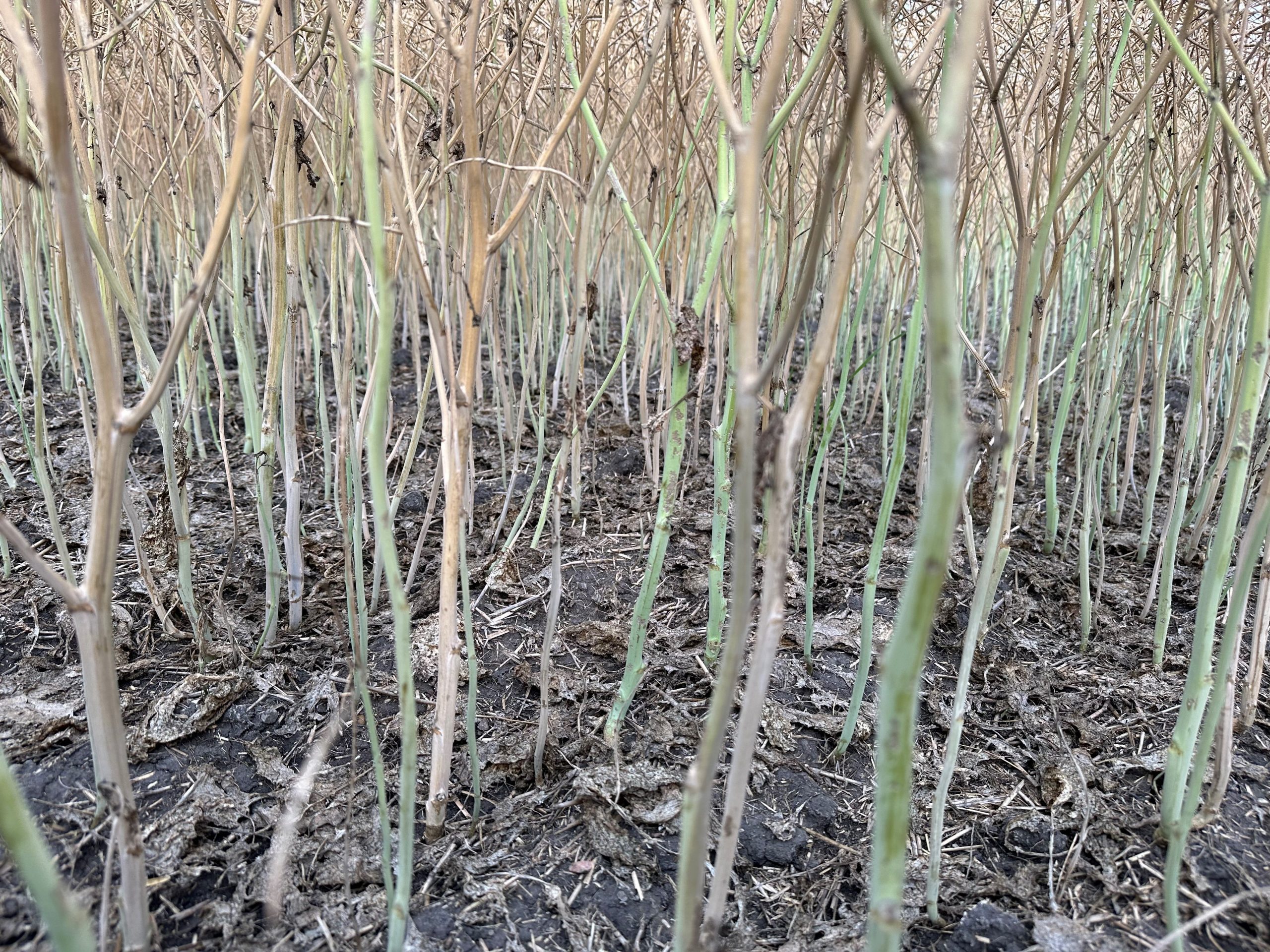Emerging threats to canola are keeping farmers on their toes and require even more nuanced solutions than ever before.
To keep up with these demands, BASF Agricultural Solutions Canada (BASF) is introducing a new hybrid as part of the InVigor canola hybrid lineup to keep pace with these challenges farmers are seeing in their fields.
New for 2026, BASF will be introducing InVigor L355PC to help protect against both new and established soil-borne diseases– all while providing high yield potential. The hybrid is in trials for farmers at Demonstration Strip Trials (DST) across the Prairies this summer. For those in the mid-long growing zones, InVigor L355PC offers a robust disease package to help protect against clubroot and blackleg with strong verticillium stripe performance rating.
“This hybrid in our lineup shows farmers that they can support their yield potential while still managing disease through superior genetics,” says Mark Alberts, senior brand manager, InVigor. “InVigor L355PC is performing very well in DSTs this summer and we encourage farmers to go out and take a look for themselves.”

Together with three new early maturing hybrids launched in 2025, BASF has developed their most complete InVigor hybrid lineup ever to help target each canola farmer’s local concerns, while still offering high yield potential. Combined with their canola crop protection solutions, rigorous testing and backed by a team of agronomic professionals across the country, Alberts says that BASF offers canola farmers the latest agronomic innovations and cutting-edge technology.
“There has never been a better time to find the right hybrids to help manage your canola challenges,” says Alberts. “Combined with the three InVigor hybrids launched for 2025, we now have a hybrid that can meet most needs. Whether you are looking for early to later maturing hybrids, strong disease resistance, harvest flexibility, high yield potential – including health or dual herbicide trait hybrids – you can look across the InVigor lineup to find the best fit.”
Finding solutions to a new threat
Verticillium stripe is a disease that more farmers are becoming aware of and are looking at how to manage. First identified in the Red River Valley in Manitoba a little over a decade ago, the disease was seemingly spreading in association with blackleg, which may have delayed its identification. Now that researchers know what they are dealing with, they have found that the disease is continuing to spread across the Prairies.
“Verticillium can be tricky because while still a soil-borne disease, verticillium moves up the stems of the plant and is easily distributed when harvesting the crop,” say Clint Jurke, regional technical services manager with BASF. “Right now, there is no perfect management solution. However, our breeding team has identified ways to reduce the severity.”

BASF has begun identifying which of their hybrids provide partial resistance to verticillium. While nothing yet has that coveted “R” rating, there are some that will manage it.
“We have been researching the performance of our hybrids against verticillium to see how the different genetics hold up,” says Jurke. “InVigor L355PC, InVigor L358HPC and InVigor L356PC will be a good fit for farmers to assist with this concern. While they won’t be able to escape it completely at this point, these hybrids will offer some protection.”
Combatting clubroot
InVigor L355PC has first-generation clubroot protection which is resistant against most clubroot pathotypes impacting farmers. While the greatest spread and severity is in Alberta, clubroot is an issue across the Prairies. As a soil-borne disease, it is extremely persistent in the soil and can live there for up to 20 years. While genetic resistance is an important tool to help control diseases, growers should use an integrated pest management strategy.
First-generation resistance is appropriate in most fields in Saskatchewan and Manitoba, and in many areas of Alberta. But for growing areas where that resistance has started to breakdown, InVigor has products that are bred with second-generation resistance, including InVigor L341PC and InVigor L343PC which were launched in the past few years.
Simplifying harvest
Jurke says pod shatter remains one of the most valuable proprietary traits in the InVigor portfolio, with all hybrids bred with this feature. Pod shatter traits help mitigate risk and offer the flexibility to allow the canola pod to fill better.
“This innovation is of very high value to farmers,” says Jurke. “The longer you leave the crop attached to the ground in the field, the higher yield potential at harvest. When we first introduced this technology over ten years ago, farmers immediately saw the value of this trait, first in straight cutting and later when the advantages in swathing flexibility were determined.”
Pod drop can be another pressing issue come harvest when the pod itself is separated from the plant and is lost on the ground. Primarily related to extreme weather events, which have become more common at harvest, all InVigor hybrid strong pod drop protection.
Prairie trial results show regional performance
For farmers interested in these hybrids, BASF shares comprehensive, real world trial results of InVigor hybrids along with those from their competitors at InVigorResults.ca. Each trial is managed by a farmer cooperator using their equipment and agronomic practices. The trials are each replicated four times, using rigorous protocols that mimic on-farm conditions.
“One of the most rewarding parts of my job is seeing just how well our seed technology is performing in real time,” says Alberts. “Farmers can visit the website at any time to see how this year’s hybrids are performing across the Prairies, with the DST trial results of InVigor L355PC posted shortly after harvest.”
For information on InVigor’s 2026 hybrid lineup, visit MostTrustedCanola.ca.









